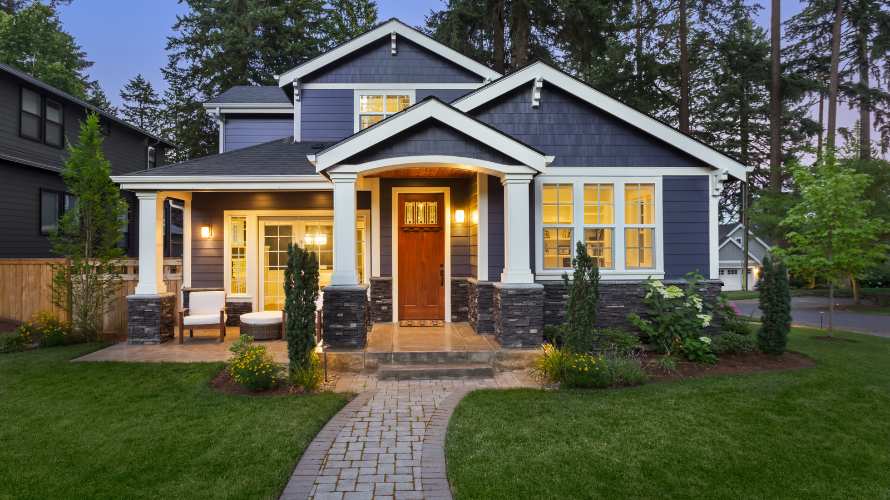The exterior paint color of your home is more than just a cosmetic choice; it’s a reflection of your style, a critical factor in curb appeal, and an element that can significantly impact your home’s value. Whether you’re looking to refresh your home’s appearance or prepping it for sale, selecting the right exterior paint color can make all the difference. In this blog post, we’ll guide you through the top 10 tips for choosing the perfect exterior paint color, providing expert advice and actionable insights to help you make a decision you’ll love for years.
The Importance of Exterior Paint
The first impression of your home is often its exterior. The paint color you choose can highlight architectural features, blend with the natural surroundings, and even influence how large or small your home appears.
Beyond aesthetics, a fresh coat of exterior paint can protect your home from the elements and increase its market value.
Top 10 Tips for Choosing the Perfect Exterior Paint Color
1. Consider Your Home’s Architectural Style
Each architectural style has a palette of colors that traditionally complement its design. For example, a Victorian home might look stunning in bold, contrasting colors, while a modern minimalist home might benefit from neutral tones.
Research your home’s architectural style and consider colors that enhance its unique features.
2. Evaluate Neighborhood Trends
Take a stroll around your neighborhood. Notice the colors of nearby homes and any common themes. While you want your home to stand out, ensuring it doesn’t clash with the surrounding properties is also essential. Blending in harmoniously can boost your home’s appeal and property value.
3. Reflect on the Natural Environment
Your home’s natural surroundings can inspire your exterior paint color.
Earthy tones might benefit homes in wooded areas, while breezy, pastel shades often complement coastal homes. When choosing your color palette, consider the landscape, flora, and climate.
4. Use the Color Wheel for Guidance
The color wheel is a valuable tool for selecting complementary colors. Understanding basic color theory can help you choose secondary and accent colors that enhance the primary color of your exterior. For instance, a blue house might pair well with white or gray accents.
5. Test Samples in Different Lighting
Light changes throughout the day and can dramatically alter the appearance of a paint color. Always test your final color choices by painting swatches on different sides of your home. Observe these swatches at various times of the day to see how they look in different lighting conditions.
6. Think About Permanence
Consider your home’s fixed elements, such as the roof, stonework, or brick that won’t change anytime soon. These elements have colors that should complement your chosen paint color. Ensure your exterior paint blends well with these existing features.
7. Balance Bold and Neutral
While bold colors can make a statement, they can also be overwhelming if overused. Balance bold choices with neutral tones to create a cohesive and appealing look. For example, a bright red door can be striking against a more muted exterior.

8. Plan for Accents and Trim
Your home’s trim and accent colors can enhance the primary exterior color. Choose trim colors subtly contrasting with the primary color to highlight architectural details. Accent colors for doors, shutters, and other features can add personality and charm.
9. Seek Expert Advice
Professional painters and home design specialists have extensive experience with color selection and can provide valuable insights. Many paint stores offer color consultation services to help you choose the perfect palette. Don’t hesitate to seek their expert advice.
10. Avoid Common Mistakes
Avoid these common pitfalls when selecting your exterior paint color:
- Ignoring the Roof Color: The color of your roof should influence your paint choices.
- Choosing Colors That Are Too Light or Too Dark: Extremely light or dark colors can fade and show dirt more quickly.
- Overwhelming Color Variety: Stick to a cohesive color scheme to avoid a disjointed look.
Expert Insights and Advice
We spoke with professional painters and home design specialists to gather their top recommendations:
- Jane Doe, Interior Designer: “Always consider your home’s architecture and historical significance. Classic styles benefit from timeless color choices.”
- John Smith, Professional Painter: “Sampling multiple colors on different sides of your home is crucial. Natural light can significantly influence how a color looks.”
Real-Life Case Studies
Case Study 1: The Colonial Revival
A homeowner transformed their Colonial Revival home using a sophisticated blue-gray with crisp white trim. The result was a classic yet modern look that enhanced the home’s historical charm.
Case Study 2: The Mid-Century Modern Makeover
A mid-century modern home received a fresh update with a warm, earthy palette that complemented its natural surroundings. The new colors highlighted the home’s clean lines and minimalist design.
Common Mistakes to Avoid
Steering clear of these mistakes can save you time and money:
- Ignoring the impact of surrounding landscaping and hardscaping.
- Following trends too closely without considering long-term satisfaction.
- Failing to coordinate exterior colors with interior design themes.
Step-by-Step Guide to Painting Your Home
Here’s a brief overview of the painting process:
- Preparation: Clean surfaces, repair any damage, and apply primer.
- Choosing Paint: Select high-quality exterior paint designed to withstand weather conditions.
- Application: Use the proper tools and techniques for even application.
- Final Touches: Inspect your work and make any necessary touch-ups.
Conclusion
Choosing the perfect exterior paint color can feel daunting, but with the right approach and resources, it becomes a rewarding project that dramatically enhances your home’s appearance and value. We hope these tips empower you to make an informed and confident decision.
Feel free to share your own experiences or seek professional assistance. We’d love to hear from you!
You may also like to take a look at some of these great resources: Also, here are some resources to help you select a reputable contractor:



